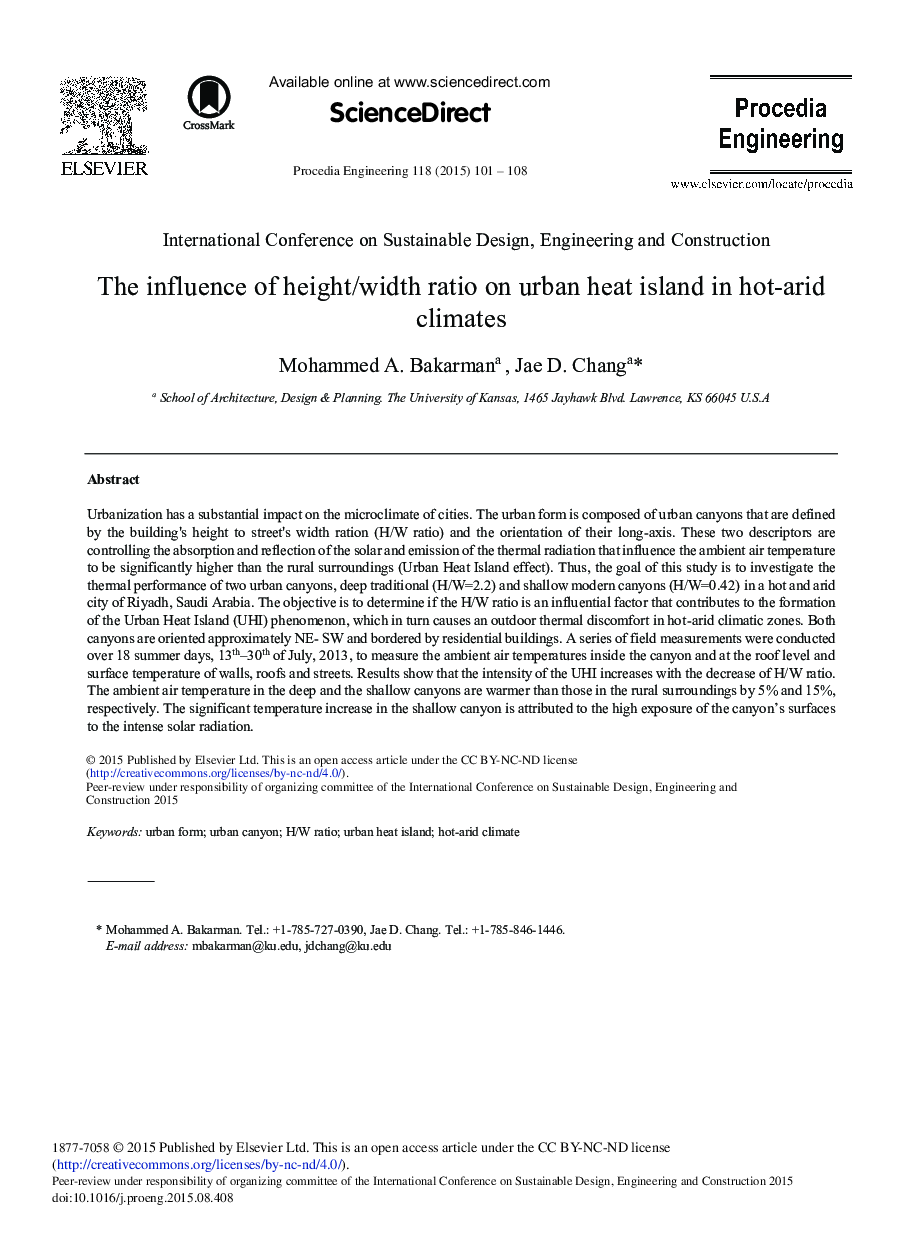| کد مقاله | کد نشریه | سال انتشار | مقاله انگلیسی | نسخه تمام متن |
|---|---|---|---|---|
| 855584 | 1470708 | 2015 | 8 صفحه PDF | دانلود رایگان |
Urbanization has a substantial impact on the microclimate of cities. The urban form is composed of urban canyons that are defined by the building's height to street's width ration (H/W ratio) and the orientation of their long-axis. These two descriptors are controlling the absorption and reflection of the solar and emission of the thermal radiation that influence the ambient air temperature to be significantly higher than the rural surroundings (Urban Heat Island effect). Thus, the goal of this study is to investigate the thermal performance of two urban canyons, deep traditional (H/W=2.2) and shallow modern canyons (H/W=0.42) in a hot and arid city of Riyadh, Saudi Arabia. The objective is to determine if the H/W ratio is an influential factor that contributes to the formation of the Urban Heat Island (UHI) phenomenon, which in turn causes an outdoor thermal discomfort in hot-arid climatic zones. Both canyons are oriented approximately NE- SW and bordered by residential buildings. A series of field measurements were conducted over 18 summer days, 13th–30th of July, 2013, to measure the ambient air temperatures inside the canyon and at the roof level and surface temperature of walls, roofs and streets. Results show that the intensity of the UHI increases with the decrease of H/W ratio. The ambient air temperature in the deep and the shallow canyons are warmer than those in the rural surroundings by 5% and 15%, respectively. The significant temperature increase in the shallow canyon is attributed to the high exposure of the canyon's surfaces to the intense solar radiation.
Journal: Procedia Engineering - Volume 118, 2015, Pages 101-108
